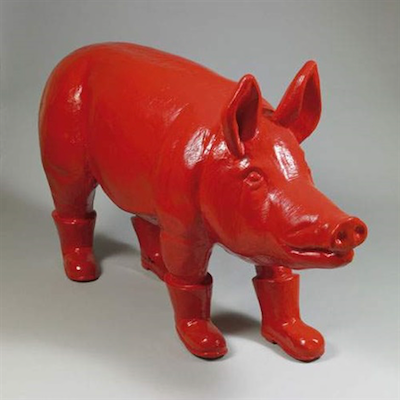
Details
Artist
Styles
Screen print, printed on 490 gram smooth custom paper // Feng Zhengjie’s Chinese Portrait (c) is a vibrant screen-print that exemplifies his exploration of contemporary Chinese identity through surreal portraiture. The artwork features a stylized portrait of a woman with bold, saturated red hair and striking red lips against a glowing background. Her eyes, partly obscured, add a sense of detachment and mystery, which is characteristic of Feng's work, often critiquing societal standards of beauty and identity. The intense color contrasts and smooth gradients create an almost neon effect, giving the piece a pop-art feel. Limited to an edition of 200, this print merges traditional portraiture with modern aesthetic influences, making a statement on cultural identity in a rapidly evolving society.
Chinese Portrait (c), 2008
form
Medium
Size
81 x 81 cm
- Inches
- Centimeters
Edition
Price
- USD
- EUR
- GBP
Details
Artist
Styles
Screen print, printed on 490 gram smooth custom paper // Feng Zhengjie’s Chinese Portrait (c) is a vibrant screen-print that exemplifies his exploration of contemporary Chinese identity through surreal portraiture. The artwork features a stylized portrait of a woman with bold, saturated red hair and striking red lips against a glowing background. Her eyes, partly obscured, add a sense of detachment and mystery, which is characteristic of Feng's work, often critiquing societal standards of beauty and identity. The intense color contrasts and smooth gradients create an almost neon effect, giving the piece a pop-art feel. Limited to an edition of 200, this print merges traditional portraiture with modern aesthetic influences, making a statement on cultural identity in a rapidly evolving society.
- Recently Added
- Price (low-high )
- Price (high-low )
- Year (low-high )
- Year (high-low )
What is Kitsch?
Kitsch is a term used to describe cheap, commercial, sentimental, or vulgar art and objects commonly associated with popular culture. The word is borrowed from German, where it originally means trash. Since the 1920s, kitsch has been used to denote the opposite of high art, often implying that the work lacks sophistication or artistic merit.













